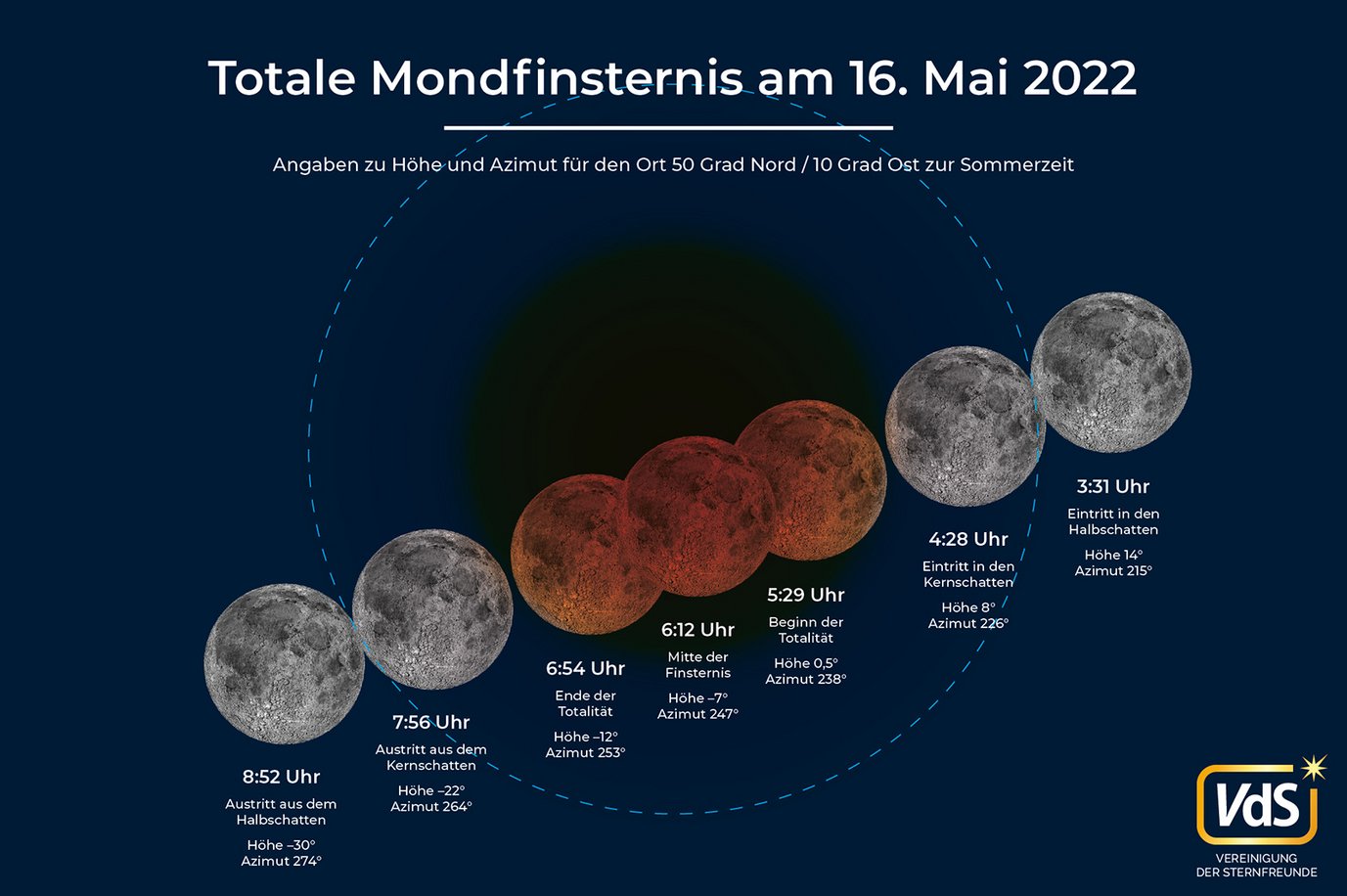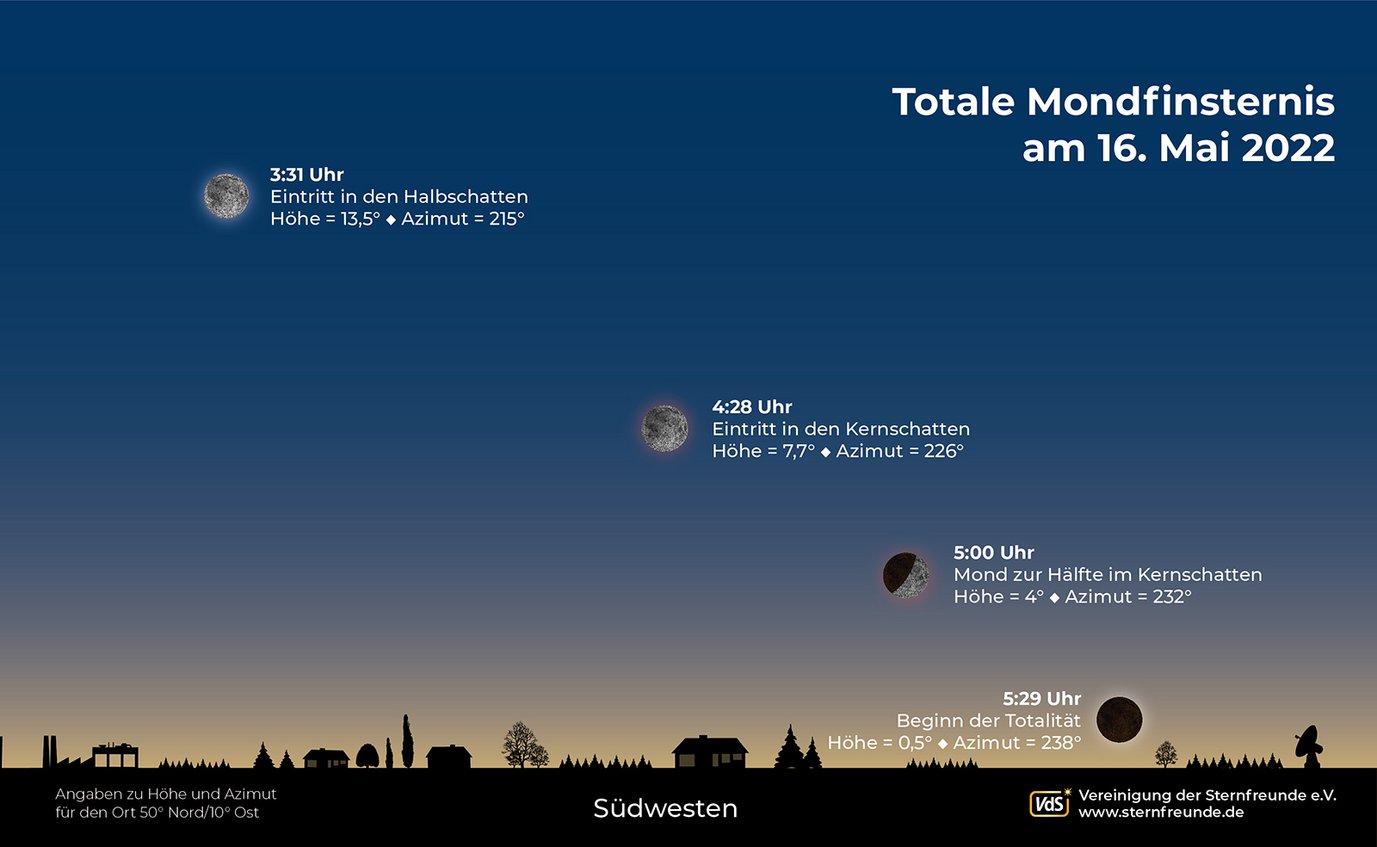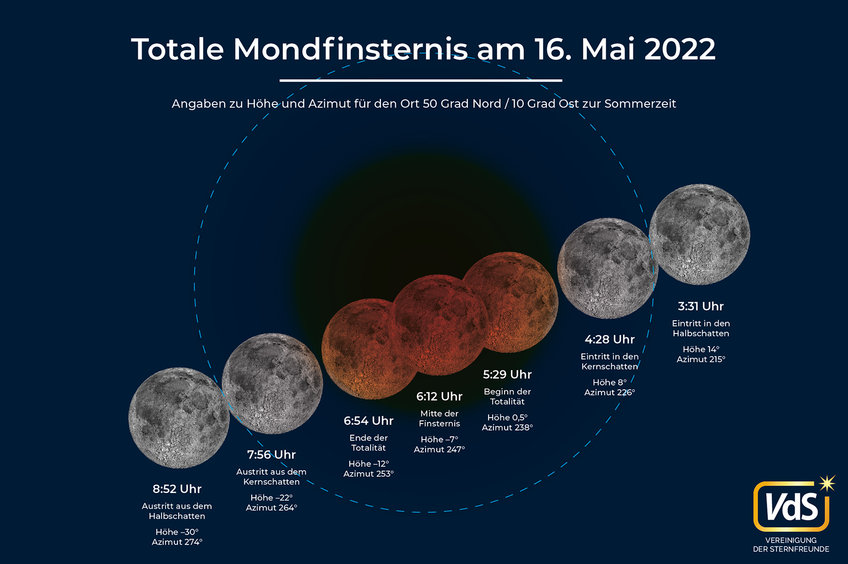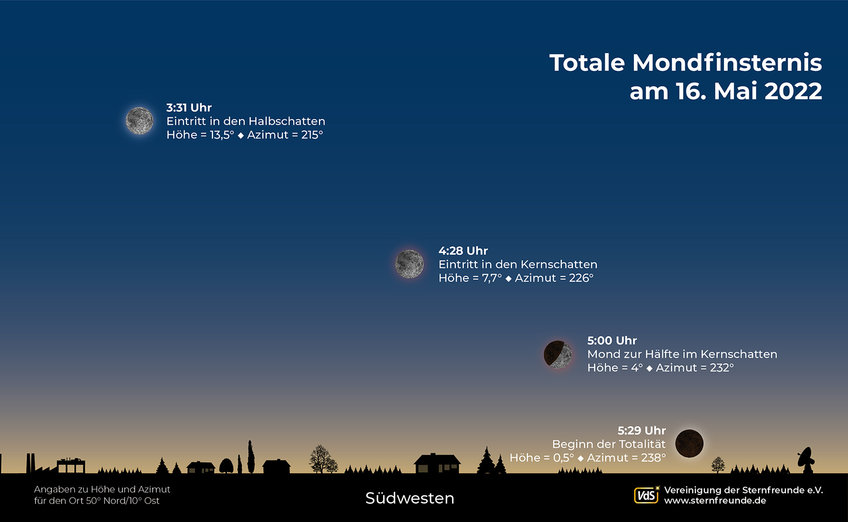For early risers: The total lunar eclipse on 16 May 2022
In the early morning hours of May 16, 2022, a cosmic spectacle will be visible: the full Moon will be completely immersed in the shadow of the Earth and a total lunar eclipse will take place. Unfortunately, in Germany the Moon is just setting and the sky is already quite bright at the beginning of the total eclipse. Observers will therefore only be able to watch a partial eclipse low above the southwest horizon.
A lunar eclipse can only occur at full Moon, when Moon, Earth and Sun form a straight line. The Earth, illuminated by the Sun, casts a shadow into space like a parasol. When the Moon passes through this shadow, we see a lunar eclipse. However, the full Moon will usually stay above or below the Earth's shadow because the Moon's orbit is tilted by five degrees against Earth's orbit. Therefore, both lunar and solar eclipses (when the Moon is between the Earth and the Sun) are quite rare. There are 12 to 13 full Moons per year, with three of them dipping into the Earth's umbra on average. But we see a lunar eclipse only if the Moon is above the horizon at that time; otherwise the eclipse can only be seen elsewhere on Earth.
The Earth's shadow in space has two areas: the inner umbra and the outer penumbra. If the Moon is in the umbra with its whole disk, we see a total lunar eclipse. During a partial lunar eclipse, the Moon enters the umbra only partially. A passage of the Moon through the outer penumbra of the Earth is called a penumbral eclipse - it is hardly noticeable.

During the total lunar eclipse on 16 May 2022, the Moon enters the umbra of the Earth completely. However, totality begins only at 5:29 CEST - exactly when the Moon just sets seen from the center of Germany. Further east you will miss the beginning of totality, further west you can still observe the total phase for a short time. At 6:12 CEST the middle of the eclipse is reached, at 6:54 CEST the total phase ends. In the west of France, in Spain, West Africa and from the Canary Islands, the lunar eclipse can be followed until the middle of totality and beyond. Optimal viewing conditions occurr in the eastern part of the United States and throughout South America.
Observers in Germany need clear skies, a completely undisturbed view to the southwest horizon and have to get up very early. Shortly after 3:30 CEST, the lunar disk moves into the penumbra of the Earth, which will be noticeable as a slight dimming of the moonlight from about 4 CEST. Then, shortly before 4:30 CEST, the Moon enters the Earth's umbra and the actual lunar eclipse begins. However, at this point the Moon is only 8° above the southwest horizon and slowly sinks lower as the eclipse progresses. At the same time, dawn brightens the sky more and more - the darker the Moon gets, the brighter the sky becomes.

In practice, this eclipse will thereforde only be seen as a partial lunar eclipse. For many people it will be over around 5 CEST when the Moon has entered half of the shadow of the Earth and is just 4° above the horizon. For both observers and photographers, the challenge now begins: How long can the partially eclipsed Moon be seen or photographed as it approaches the horizon and the increasing twilight brightens the sky more and more? For photos of the lunar eclipse, you can take overview shots with a nice foreground subject or use a telephoto lens. You should mount the camera on a tripod for this purpose.
And the next upcoming lunar eclipses? 28 October 2023 offers a small partial lunar eclipse in the evening that can be observed throughout its course. The same applies to the morning of 18 September 2024. The total eclipse on 14 March 2025 will be similar to the one on 16 May 2022 - the Moon will set in the morning during the partial phase. The next total lunar eclipse will not occur until 7 September 2025 - with convenient observating conditions in the evening sky.

